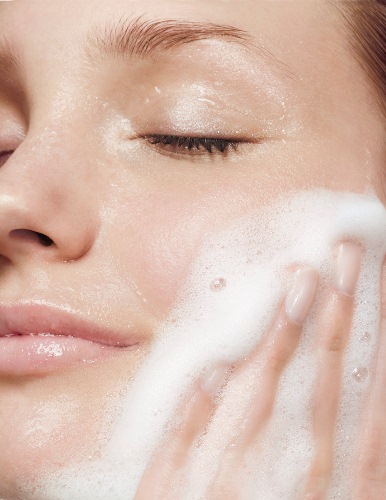A couple of weeks ago I read an article about foaming cleansers and how they can negatively effect the skin, and I had a real light-bulb moment. I had recently started using a foaming cleanser two to three times a week with my Clarisonic, (instead of my usual Cetaphil) and I started noticing that after every use, my skin would be left red and irritated. I am ashamed to say that I didn’t even make the connection between the foam and the irritation until I read that article! So, you ask, what’s the deal with foaming cleansers? Well, to answer that question, we need to start with a basic biology lesson…
Healthy skin should have a slightly acidic pH (known as its “acid mantle”) because it protects the skin from drying out, delays wrinkling and other signs of aging, keeps bacterial and fungal infections at bay and reduces breakouts. Foaming cleansers tend to be highly alkaline and can strip away the skin’s acid mantle – the result is drier skin that ages more quickly and is less able to withstand infection. The nasty ingredient in most foaming cleansers is sodium laureth sulphate. SLS is a surfactant/foaming agent – it’s the same stuff that gets put into detergents to make them foam. Yes, you read that right. Now, I enjoy a good foam-up as much as the next girl – there is nothing more satisfying than being lathered up in all kinds of delicious soaps, shampoos, body washes and cleansers, and this is because we associate foam with cleanliness. However, it’s a complete myth that foaming products are more effective than non-foaming products – you may feel as though you are cleaner, but that isn’t scientifically the case.
If you are a die-hard foam fan, all is not lost. Certain brands, such as Mama Mio and Elemis, do have SLS-free foaming cleansers which are much more gentle on the skin. If you are going to continue on with foaming cleansers, I would recommend that you use a pH balanced toner afterwards and moisturise with plant oils – these products will compensate for the alkalinizing effect of foaming cleansers and will restore the acidic environment on the skin. You can also use either a gycolic, salicylic and lactic acid (decrease in strength in that order) to strengthen the skin and keep it acidic.
If you want to learn more about this topic, you can read Caroline Hiron’s post here, Amelia Liana’s post here or watch Sali Hughes’ video here.
Image via


